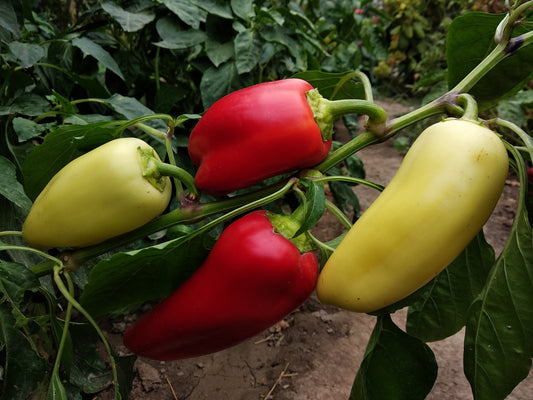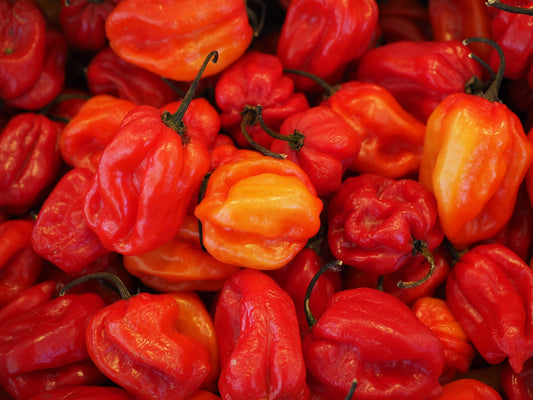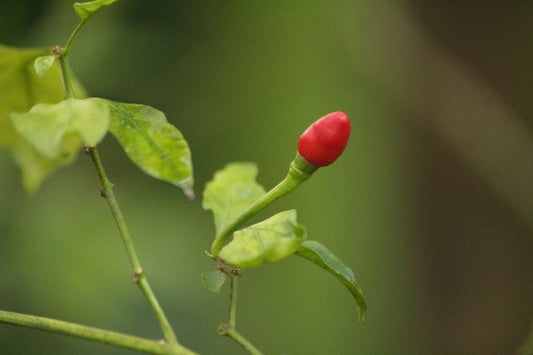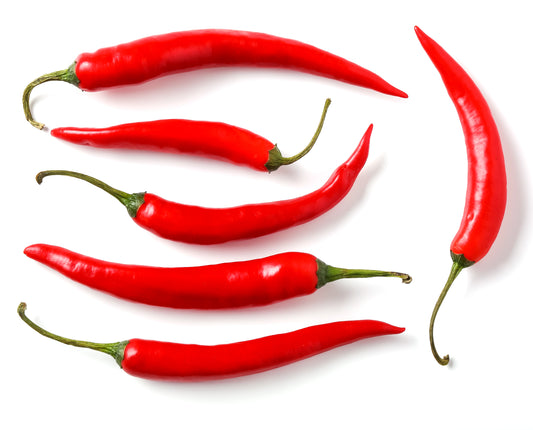Capsicum chinense is a species of chili pepper native to Central and South America. It was first described in 1776 by the botanist Nikolaus Joseph von Jacquin and has since become one of the most cultivated pepper species in the world.
Botanical features
It is a perennial plant that grows up to 1.5 meters in height. It has dark green leaves that can be oval or lanceolate and white flowers with five petals.The fruits vary in shape, but are generally smaller and hotter than the fruits of other pepper species such as Capsicum annuum or Capsicum frutescens.
The Capsicum chinense pepper has been classified into many varieties, each of which has its own appearance and degree of spiciness. Among the best known varieties are the Bhut Jolokia, the Trinidad Scorpion, the Carolina Reaper and the Yellow 7 Pot.
Spiciness
Capsicum chinense is known for its extreme spiciness, due to the presence of capsaicin.Originating in India, Bhut Jolokia was for a long time the hottest pepper in the world, with a heat rating of over one million Scoville units.
However, it was surpassed by later varieties such as the Trinidad Scorpion and the Carolina Reaper, which achieved a spiciness rating of over 2 million Scoville units.
Uses in the kitchen
Despite its extreme spiciness, Capsicum chinense is used in many cuisines around the world to add a spicy and intense flavor to dishes.In Central and South America, it is often used to prepare spicy sauces and condiments to accompany meat, fish and vegetables.
In India, Bhut Jolokia is used to prepare the national dish of Nagaland, called Axone. Made with fermented soybean paste with onions, garlic, chillies and other spices.
It is also used to prepare chutneys and hot sauces to accompany rice and meat dishes.
In Mexico, Capsicum chinense is used to prepare deviled chicken, called chicken con mole. The chili is also used to make hot sauces such as salsa de chile de árbol, which is served with nachos and other dishes.
Health benefits
In addition to its culinary use, Capsicum chinense also has some health benefits. The capsaicin found in chili peppers has been associated with several positive effects on the human body. For example, to an improvement in blood circulation and a reduction in the risk of cardiovascular disease.Additionally, capsaicin may have anti-inflammatory and analgesic properties, which can help relieve pain and inflammation.
Cultivation
Capsicum chinense can be grown in many parts of the world, but it prefers a warm, humid climate. Chili plants need lots of sun and water to grow, and require good soil fertilization.Hotter varieties of Capsicum chinense may require a greater degree of care in their cultivation, as they may be more susceptible to disease and pests.
However, with the right care and attention, chili plants can produce a bountiful harvest of hot and flavorful fruit.





